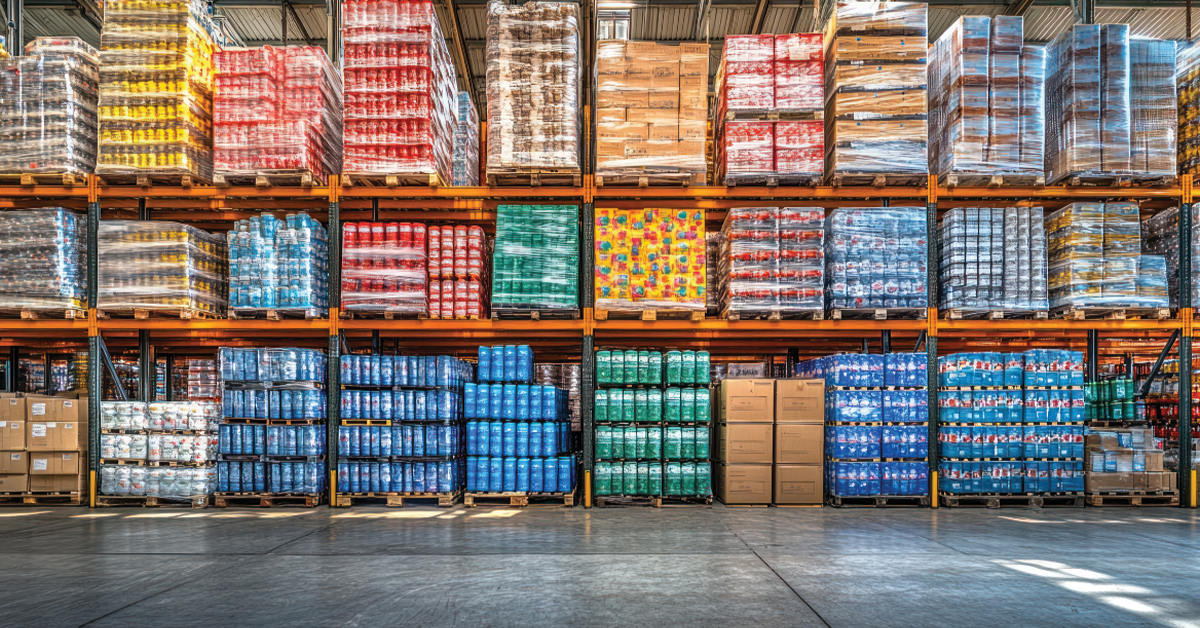Slash Warehouse Costs: How Flexible Warehousing Boosts Agility and Savings for Food Shippers
by Flexe, Inc. | Sponsored Content, on Sep 19, 2025 11:27:49 AM

For food and beverage companies, operational pressure is mounting. Inflation, supply disruptions, and shifting consumer expectations are reshaping how products are made, moved, and sold. Your fixed warehouse networks, once designed for stability, are now struggling to keep pace with volatile demand, seasonal spikes, and accelerated fulfillment timelines.
In this dynamic environment, traditional warehousing models tied to long-term leases and fixed costs often lead to poor economics. You might be paying for underutilized space during slow periods or facing capacity constraints during seasonal surges, leading to missed sales and damaged margins. The good news is there’s a smarter strategy: flexible warehousing.
This approach, also known as fractional warehousing, allows you to build a more agile and resilient supply chain by paying only for the warehouse space and services you actually use, for only as long as you need them. Let's explore how this model can help you slash costs and enhance operational performance.
1. From Fixed Costs to Flexible Serving Sizes
Traditional logistics can be a major financial drain. When you're locked into long-term contracts for warehouse space, you're paying for a fixed amount of square footage whether you use it or not. If your sales forecast is off, you're either paying for empty space or scrambling to find more capacity when demand surges.
Flexible warehousing changes the game with a transactional, "pay-as-you-go" model. You can secure the base capacity you need and easily scale up during peak seasons or a big promotional push. You're no longer paying for space you don't use.
A great example is a national beverage brand that had to store inventory for their summer promotions from May to August. Their old, fixed contracts left them with nearly empty warehouses and high costs during the off-season. By switching to a flexible model with Flexe, they saw storage costs drop by over 300%. Instead of paying over $200,000 per month on a fixed contract, their monthly costs varied from just $9,000 to $117,000, perfectly aligning with their actual usage.
2. Cut Risk, Not Your Menu
Traditional warehouse leases of three to five years are becoming increasingly risky in today's environment of geopolitical shifts and economic uncertainty. Growing companies often overestimate space needs and add "just-in-case" buffers, only to end up paying for empty capacity.
Flexible terms allow you to commit to shorter durations—from as little as 30 days up to two years—and adapt as your business evolves. This is especially valuable for food and beverage companies managing seasonal demand peaks.
For example, a global F&B company needed to scale up distribution in the southeast U.S. for summer demand, but their internal distribution centers were already at capacity. Leasing a new site would take too long, risking key retailer SLAs and revenue targets. Using flexible warehousing, they were able to quickly stand up certified, food-grade warehouse capacity near their demand centers, scaling capacity and improving service levels with 55% lower warehouse rates versus fixed-cost alternatives. Once the promotional window closed, they could simply scale back down without paying for idle space.
3. Invest in Innovation, Not Infrastructure
Building out a traditional warehouse network involves significant upfront capital expenditure. Costs for identifying and outfitting a facility with racking, a Warehouse Management System (WMS), and ERP integration can quickly escalate into the millions.
Flexible warehousing eliminates much of this burden by allowing you to tap into existing, pre-certified facilities with modern infrastructure already in place. This reduces setup-related CapEx and allows you to become operational in days, not months.
This approach frees up capital for more strategic initiatives and allows for experimentation. For instance, a home improvement retailer wanted to achieve two-day delivery nationwide but only had an East Coast fulfillment center. Instead of investing millions in a permanent West Coast facility without knowing the ideal location, they used a flexible warehouse in Reno to experiment. This allowed them to test the geography and optimize their network before committing significant CapEx, using the flexible solution as a stepping stone toward their long-term goal.
4. Get Closer to the Customer, Not Just the Warehouse
For most supply chains, transportation spend outweighs warehousing spend by three to eight times. Placing inventory closer to your customers can yield significant savings, but building out a dense network of fixed distribution nodes is prohibitively expensive.
Flexible warehousing allows you to strategically forward-deploy inventory in key regions without committing to permanent infrastructure. This reduces lead times, improves replenishment speed, and lowers transportation costs.
Consider a retailer that was struggling with 3- to 5-day replenishment times from manufacturers directly to stores. By deploying a flexible node between their manufacturers and retail locations, they created a consolidation point. This allowed manufacturers to send full truckloads to the central node, which then sent consolidated, full truckloads to retail stores on a predictable schedule. The result? Replenishment speed improved to just 24 hours, and better inventory availability led to a 16% increase in sales.
Is Flexible Warehousing Right for Your Business?
While flexible warehousing offers powerful benefits, it's most effective when used as a strategic supplement to your existing fixed network. The key is to find the right blend.
To see if it’s a fit, start by assessing your business's pain points.
- Are you paying for underutilized space in long-term leases?
- Do you face frequent stockouts during peak seasons?
- Are you struggling with port congestion or inbound capacity constraints?
- Do you need to build and manage safety stock for volatile promotional demand?
If you answered yes to any of these, exploring a flexible warehousing solution could unlock significant savings and build a more resilient, agile supply chain ready for whatever comes next.
Learn more at Flexe.com: How Food & Beverage Brands Stay Agile with Flexible Warehousing
Like this kind of content? Subscribe to our "Food For Thought" eNewsletter!
Now more than ever, professionals consume info on the go. Distributed twice monthly, our "Food For Thought" e-newsletter allows readers to stay informed about timely and relevant industry topics and FSA news whether they're in the office or on the road. Topics range from capacity, rates and supply chain disruption to multimodal transportation strategy, leveraging technology, and talent management and retention. Learn More



